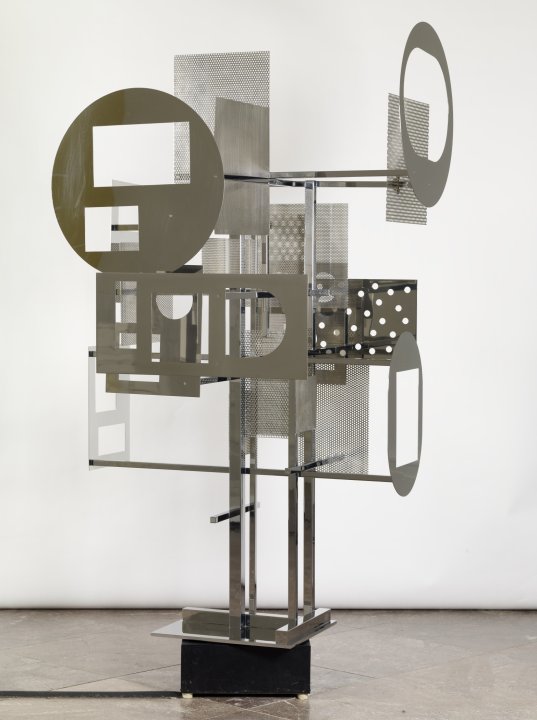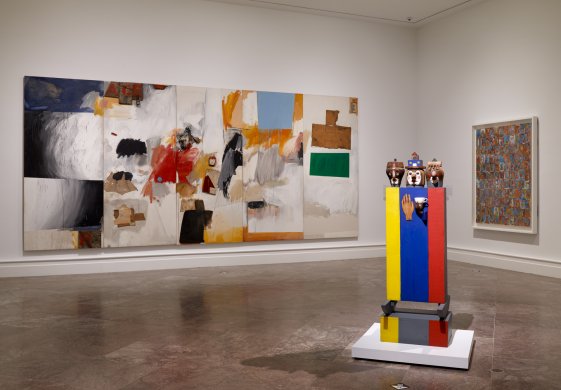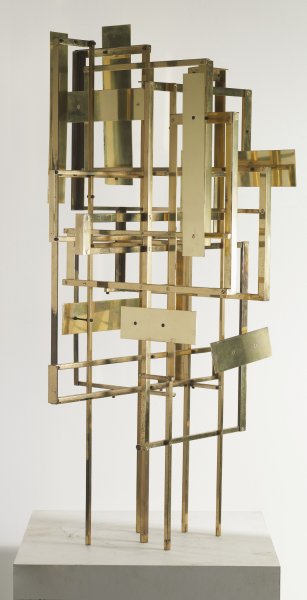Nicolas Schöffer
French, born Hungary, 1912-1992
Lux 9, 1964
Artwork Details
Materials
stainless steel, motor
Measurements
overall: 75 1/2 x 43 1/4 x 43 1/4 inches (191.77 x 109.86 x 109.86 cm)
Collection Buffalo AKG Art Museum
Credit
Gift of Seymour H. Knox, Jr., 1972
Accession ID
K1972:11
Nicolas Schöffer believed that art should be dynamic and fluid. In the mid-1940s he began to create metal sculptures favoring a stripped-down formal vocabulary that embodies the influence of Russian Constructivism and its Dutch counterpart, De Stijl. Schöffer brought to this art-historical foundation an interest in scientific progress, especially the realms of cybernetics and theoretical physics. He started to program his sculptures with feedback systems that allowed them to interact with viewers and the surrounding environment, connecting art with technology. In 1956, he created CYSP 1—a groundbreaking construction with an electronic “brain” that emits light and sound, moves at various speeds, and reacts to color and heat. The artist was even able to program the work to perform alongside human dancers.
By the 1960s, Schöffer began to take his work in a direction he referred to as "luminodynamism," a shift that resulted in his series of Lux sculptures. Lux 9 revolves on a motorized base, generating a painterly form of kinetic art in its unfolding of shadow and reflected light. In 1965, the Albright-Knox hosted the first presentation of Schöffer’s work in the United States, exhibiting seven of his constructions in Art Today: Kinetic & Optic during Buffalo’s second Festival of the Arts Today.
Label from Giant Steps: Artists and the 1960s, June 30–December 30, 2018














